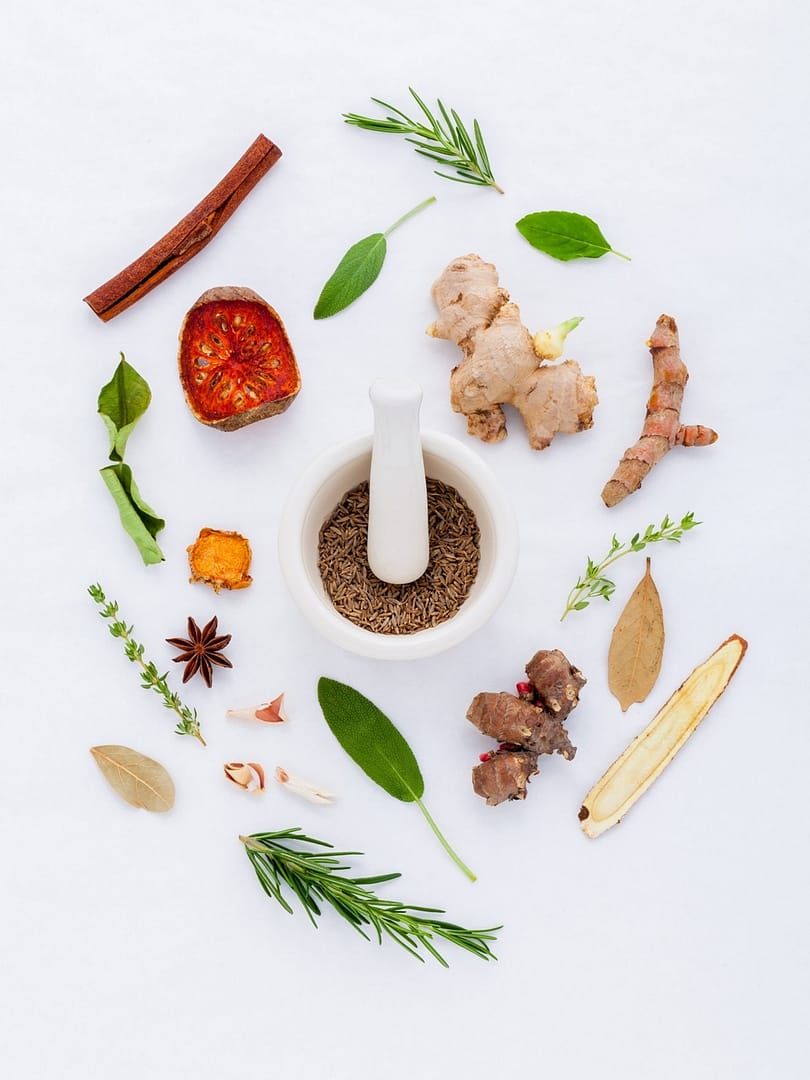Cancer Stem Cells
Functional medicine is the new movement in medicine that seeks the root cause(s) of disease for each individual. Functional medicine is also a return to the roots of what a physician or doctor is—Docēre rāphè. Words still have meaning. Rāphè is the Hebrew root word for physician which can be translated healer or “to heal”. Docēre is the Latin root word for doctor which can be translated teacher or “to teach”. Thus, the historical root perspective of a physician/doctor is one that teaches the body how to heal. This is important when it comes to the battle against cancer and the use of additional therapies such as IV vitamin C.
According to data from the American Cancer Society, from 2013 to 2017, double the number of deaths from cancer occurred annually compared to new cases of cancer annually. In the effort to find the root 
 cause(s) of cancer to curb the disproportionate deaths from cancer, Cancer Stem Cells (CSCs) are the new frontier in cancer research and cancer therapy. Cancer Stem Cells are the ultimate back-up for cancer. As the back-up, CSCs are thought to be the “root cause” of :
cause(s) of cancer to curb the disproportionate deaths from cancer, Cancer Stem Cells (CSCs) are the new frontier in cancer research and cancer therapy. Cancer Stem Cells are the ultimate back-up for cancer. As the back-up, CSCs are thought to be the “root cause” of :
-
- chemotherapy resistance
- radiation therapy resistance
- treatment failure
- tumor recurrence
- metastasis
For patients, this can be more than just bad news. Cancer Stem Cells may be the difference between winning and losing this battle. Make no mistake about it, we must be in this fight to win!
What is a Cancer Stem Cell exactly?
In general terms, stem cells are a class of undifferentiated cells that are capable, when signaled, to differentiate into specialized cell types. A lot of medical jargon I know. More specifically, in the case of cancer, Cancer Stem Cells can be used as the ultimate back-up to reproduce the original cancer cells in all of its glory of metabolic dysfunction. It is the back-up of the worst metabolic dysfunction instead of the optimal metabolic function. Back-ups are often a good and a required task for protection, but in this case, they are bad and destructive. We would rather do without these back-ups. These Cancer Stem Cell back-ups, if not destroyed, will lead to cancer recurrence. When cancer does recur from these Cancer Stem Cells, it is often more aggressive and progressive than the original presentation of cancer. It is the sequel that delivers in a very bad way. In many ways, CSCs are the cancers secret weapon.

To describe the mechanism of action of IV vitamin C in cancer, I need to get a little technical, so hold on to your hats. Humans are one of several species that have lost the ability to make vitamin C, hence what vitamin C we have in our body comes through our diet and/or supplementation. In addition, the human body has a very limited capacity to store vitamin C. One of the benefits of vitamin C in the battle against cancer is that vitamin C looks just like glucose. Vitamin C is made from glucose by the enzyme gulonolactone oxidase. Humans lack this enzyme, which requires us to get continuous vitamin C from our diet or in supplementation. As concerning as this enzymatic deficiency can be, this deficiency provides a silver lining in the fight against cancer. Cancer thrives in the typical glucose-rich environment of the western American diet. A ketogenic diet (a very low carbohydrate or glucose diet) starves the cancer of its primary fuel source—glucose. In the low glucose state, induced by a ketogenic diet, vitamin C is readily taken up by cancer cells by specific receptors, called SVCT1 and SVCT2 (which are significantly more prevalent on CSCs compared to cancer cells–see left), because of its resemblance to glucose. This allows vitamin C, in conjunction with a ketogenic diet, to act as a stealth way to deliver and attack cancer because of the different effects of vitamin C inside cancer cells compared to inside healthy cells.
Most think of vitamin C as an antioxidant, however, IV vitamin C has been shown to be a potent pro-oxidant in cancer cells and CSCs, especially at the higher dosages. It is this pro-oxidant activity of vitamin C in cancer cells that generate the high levels of Reactive Oxygen Species (ROS), such as H2O2 (hydrogen peroxide), OH− (hydroxyl free radicals), ·O2− (superoxide anions), within cancer and healthy cells (see image above). The key factor that separates cancer cells from healthy cells is that cancer cells lack certain enzymes, such as catalase, to handle these high ROS levels. Healthy cells retain appropriate catalase activity (see image below) and are perfectly capable of handling the high ROS levels. This allows vitamin C to function as an anti-oxidant in healthy cells, but as a pro-oxidant in cancer cells. This high ROS presence in cancer cells then interacts with the high levels of Iron (designated as LIP in above image) in the cancer cells and depletes the glutathione pool (designated as GSH in above image) in the cancer cells. Glutathione is one of the most important detoxification molecules in the body. A depletion of the glutathione pool leads to cellular oxidative stress which triggers cell death of the cancer cell. That is a very good thing in the fight against cancer. In addition, vitamin C also behaves as an inhibitor of glycolysis (a key step in the cell cycle of energy production in mitochondria) by targeting the activity of Glyceraldehyde 3-phosphate dehydrogenase (GAPDH), a key glycolytic enzyme. Mitochondria are the energy powerhouses of the cell where glycolysis occurs. The disruption of the energy production pathways in mitochondria of the cancer cells means certain death for the cancer cell. These functions make vitamin C a potent anti-cancer therapy without harming healthy cells—a great combination! That is just a brief review of the activities of vitamin C alone in cancer. Imagine what vitamin C can do if added to other therapies whether they be traditional (i.e. chemotherapy, radiation) or alternative (ketogenic diet, insulin potentiation therapy, curcumin…)?
The evidence
A recent study published in the journal OncoTarget found that Vitamin C induced oxidative stress and inhibited glycolysis (cell energy production using glucose) via the inhibition of GAPDH in cancer cells. This may not sound like anything new or exciting, as I highlighted this mechanism in the paragraph above and in a previous blog post. Remember, cancer has backed itself into a metabolic corner because of its metabolic inflexibility. Most view cancer as metabolically advantaged over healthy cells, but the exact opposite is actually true. Healthy cells retain the ability to switch from glucose to protein, or even better fats, as the primary source of energy production as dictated by the environment. This metabolic flexibility gives healthy cells the survival advantage over cancer cells if appropriate therapy is employed because of cancer’s, almost, sole reliance on glucose as it’s primary source of energy production.
In the study, vitamin C (at doses that can only be obtained through IV delivery) was found to kill CSCs. In addition to the increase in ROS and glutathione depletion resulting in cell death, apoptosis (described above), vitamin C was found to target the Cancer Stem Cell’s energy pathways, found in the mitochondria, as glycolytic inhibitors. Glycolysis is the energy pathway used by cancer cells to process glucose into energy because of its metabolic inflexibility (described above). Vitamin C was compared to the experimental drug 2-DG and was found to be10x more potent than the experimental drug (2-DG). Remember that CSCs are the ultimate backup copy to provide regrowth of the cancer cells if needed. Kill the back-up, you forever kill the potential for recurrence. Disease-free survival is defined as 5 years without disease. A plan of attack that includes CSCs could redefine the disease-free survival to 10, 15, 20 years and beyond. Other inhibitors of the CSC energy pathways found in this study were also Silibinin, an active component of milk thistle, and caffeine acid phenyl ester (CAPE) which comes from honeybee propolis.
Want more?
A more recent study published in the journal Precision Oncology found that vitamin C kills CSCs in the very aggressive Hepatocellular (liver) cancer. The reason? Cancer Stem Cells more readily absorbed vitamin C because of its high uptake of vitamin C. This high uptake of vitamin C occurred due to the high expression of the SVTC2 receptors (discussed above) on the CSCs compared to healthy cells or even cancer cells. It is one thing to have high plasma vitamin C levels in the presence of high SVTC2 receptors, but starve the CSC’s of its primary energy source, glucose, as a result of a ketogenic diet and the perfect high demand situation is created. Couple this high demand with the high presence of vitamin C in the plasma, which looks just like glucose, and the set up is in place for the stealth delivery of vitamin C. It is the perfect wolf in sheep’s clothing, but this time, in a good way.
A third study, published in the journal OncoTarget in 2017, found that IV vitamin C was able to kill CSCs in those cancers that were found to be resistance to the antibiotic doxycycline. This well known and commonly prescribed antibiotic has been shown to be an effective therapy against CSCs in breast, ovarian, prostate, lung, pancreatic, melanoma, and glioblastoma cancers. Interestingly, doxycycline increases the sensitivity of CSCs to radiation and chemotherapy. Some cancers, however, can escape and become resistant to the effects of doxycycline. The use of IV vitamin C in these doxycycline resistant cancers has been shown to be highly effective.
These studies concluded that Vitamin C can be used to target Cancer Stem Cells (CSCs). IV vitamin C can be used to target the copies present in the primary tumor and metastatic tumors, and the backup copy of cancer–Cancer Stem Cells The authors of the study published in the journal OncoTarget stated:
“Vitamin C may prove to be [a] promising agent for new clinical trials, aimed at testing its ability to reduce CSC activity in cancer patients, as an add-on to more conventional therapies, to prevent tumor recurrence, further disease progression, and metastasis.”
Wellness is a lifestyle, not an event. Likewise, disease is a lifestyle. Both are the products of long-standing lifestyle choices. Because of the presence of Cancer Stem Cells, the defeat of the primary cancer tumor is just the beginning in the battle against cancer. IV vitamin C is a very effective therapy against the primary cancer and the ultimate cancer backup–Cancer Stem Cells. The battle must continue with additional lifestyle interventions (i.e. nutrition) to attack CSCs in the short-term and long-term to target a life-long, disease-free survival instead of just 5 years of disease-free survival. If you don’t shoot for the stars, you will never reach the stars.
Want more information? Get in touch with us today!







